Cooked: The Juicy Loosey
Follow along, step-by-step, in mind-numbing detail. If that's your bag. After the jump.
The takeaway: Since I've not had a true Jucy Lucy from Matt's Bar, I can't say for sure, but making this burger at home is almost more trouble than it's worth. I mean, does it matter if the cheese is on the inside as opposed to above and below the patty? (I think a slice on the top and bottom is awesome.) Furthermore, I always end up overcooking this thing in the interest of getting a good molten core. This is the second time I've made a round of Juicy Looseys, and I always end up cooking them beyond medium-rare. The Flickr pix of the Matt's Bar Jucy Lucys look much better than mine, so perhaps this is a burger best left to the pros.
Also: I've found that my initial adaptation of John T. Edge's recipe worked better for me. In his book, the recipe uses an intact slice of American cheese. In my version, which is based on George "Hamburger America" Motz's observations during a visit to Matt's Bar, I fold the cheese in half twice to make a compact little stack that's easier to sandwich between the dual patties.
OK. As promised, the results.
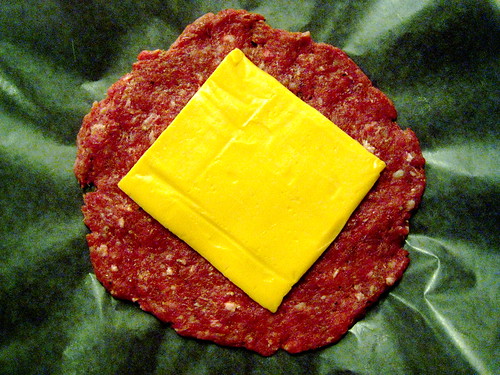
For last night's experiment, I tried two methods of cooking the Juicy Loosey. Here, I left the cheese whole and made the patties larger to accommodate it, as per John T. Edge's recipe in his book Hamburgers & Fries.
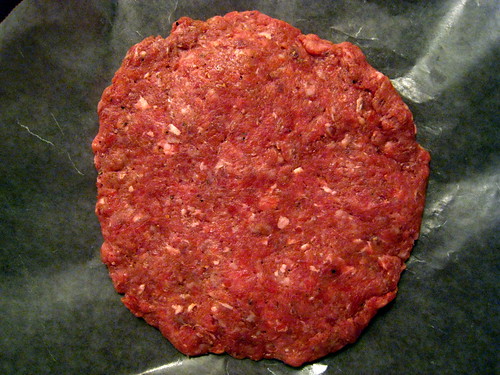
Cover that patty and cheese with a second thin patty, and crimp tightly. This makes a very thin and wide burger. You'd never guess there was a slice of cheese hiding inside.
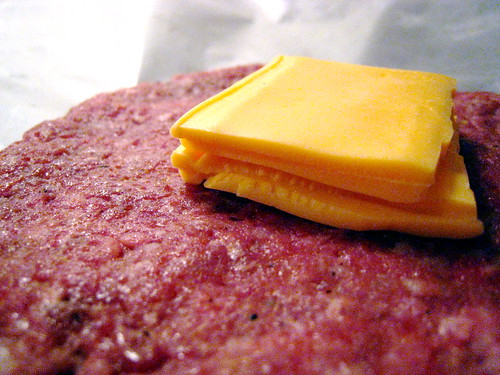
Burger maven George Motz has visited Matt's Bar (home of the original Jucy Lucy) and, contrary to John T. Edge's recipe, said that Matt's folds its cheese as above. I made this one so I could test out both methods.
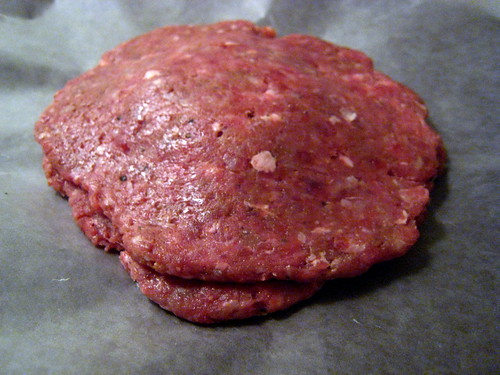
Because the quartered cheese stack has a smaller surface area, I was able to make the patties here smaller and thinner than the intact-cheese version. I thought this might help avoid the dreaded "blowout," as there'd be a thicker layer of meat to keep the gooiness in.
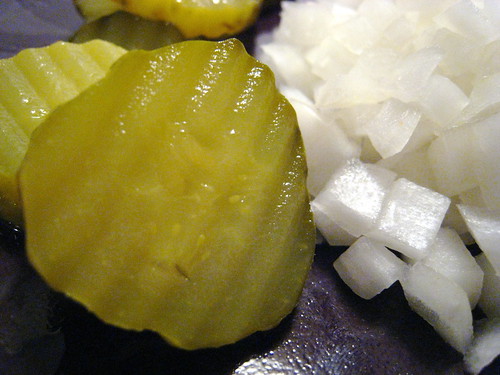
Mise en place: I had my diced onion and pickles ready. (The buns, open face, are out of the frame.) I didn't use condiments for this experiment.

Here, I throw the the first (intact-cheese) burger into the preheated (medium heat) cast-iron skillet and cross my fingers: "No blowouts, no blowouts!"
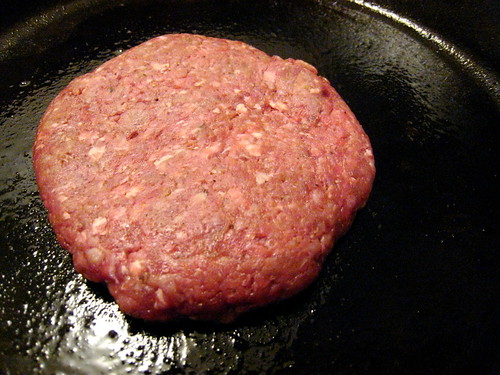
After about 3 minutes on the first side, the patty begins to plump up a little.
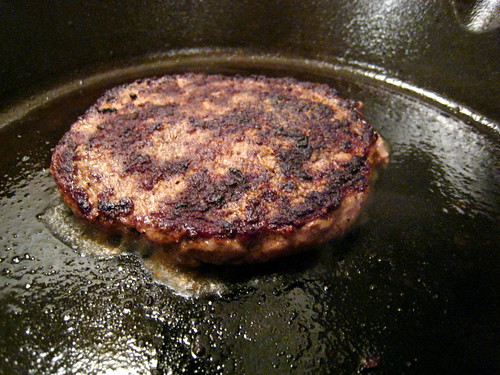
Flipped after about 3.5 minutes. Looks a little overdone, but "3 to 4 minutes for medium" was what Mr. Edge's recipe called for. Next time I'll go more like 2.5 minutes per side.
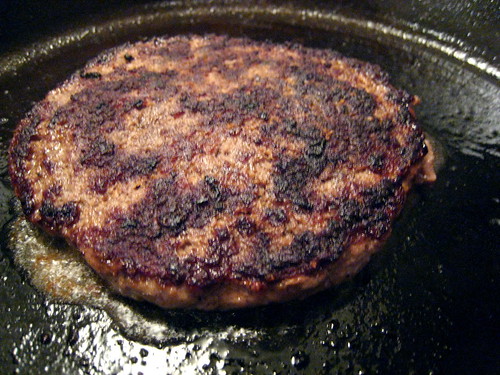
Uh oh. After about a minute on the second side, I think I'm starting to see the signs of a blowout. Is that cheese starting to leak out or just rendered fat?
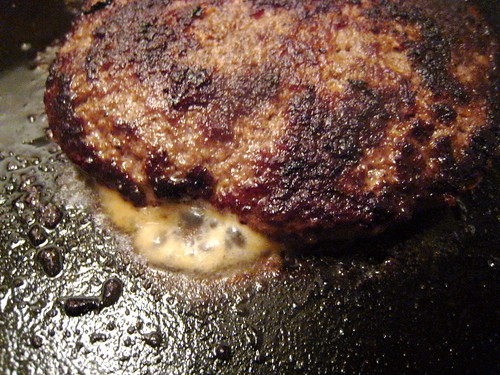
Dammit! It IS a blowout. Lucky for me, it didn't progress much beyond this. Burger maven George Motz had told me that at Matt's Bar, a blowout is a big deal, and they rush to remove such a burger from the grill ASAP -- they don't want the cheese to burn and muck up the griddle.
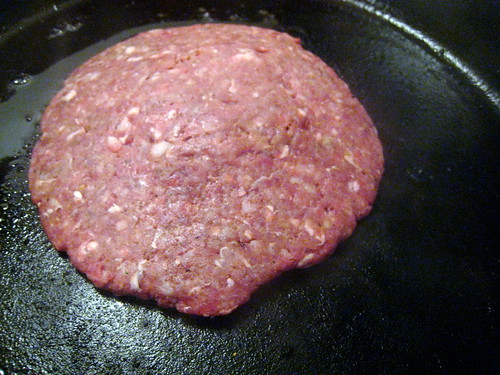
Here's the second patty (quartered, stacked cheese slice), fresh into the skillet. You can see how the taller stack of cheese makes this look like a UFO made of meat.
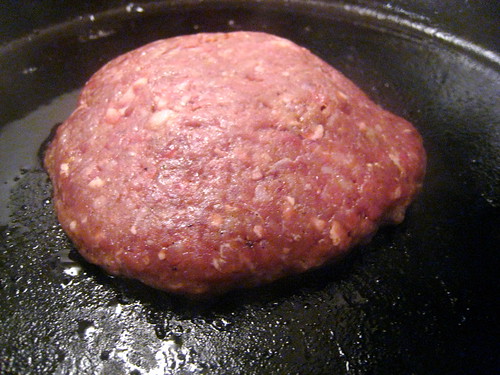
Time lapsed: about 2 minutes. The stacked-cheese patty puffed up a bit more than the flat-cheese patty. The UFO has kinda morphed into Ayers Rock.
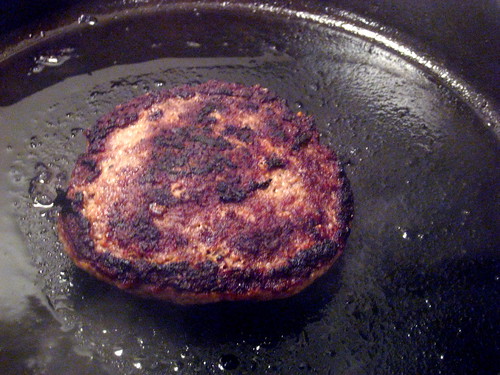
I flipped the stacked-cheese patty, toothpick ready to go in my non-spatula hand. Motz had told me that Matt's pricks its patties immediately after flipping to allow built-up steam to escape. Mine didn't seem to need the poke, so I left it alone.
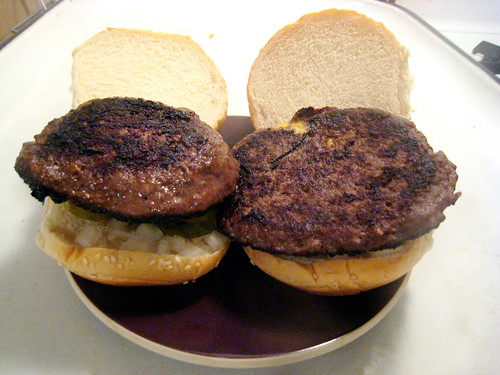
Here's the results of the two methods side by side. Can you guess which is which? Should be pretty obvs. The one on the left is stacked-cheese patty. The one on the right, which is thinner and has more surface area, is the flat-cheese specimen, complete with telltale blowout.
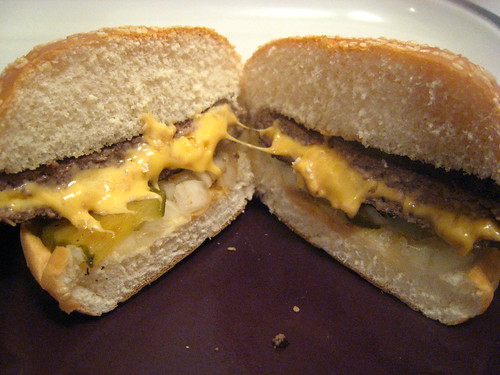
Flat-cheese burger, cross-sectioned.
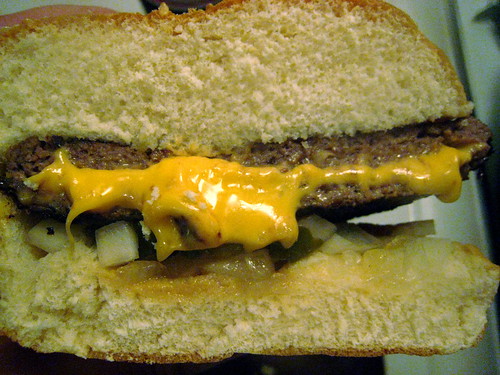
Flat-cheese burger, cross-sectioned and on closer inspection. Cooked to about medium-well, unfortunately.
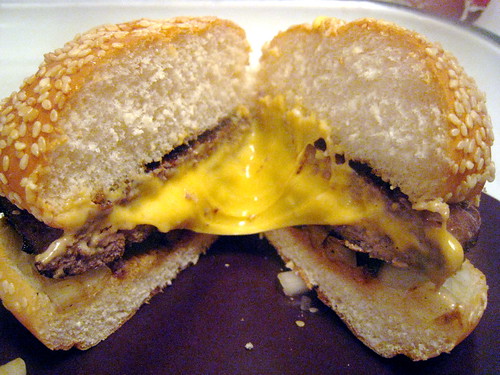
The stacked-cheese burger, cross-sectioned. I think the stacked-cheese one was more successful than the flat-cheese burger.
Still, it's pretty much six of one, half dozen the other. I think this style of burger is better left to the pros. Doesn't seem to matter too much if the cheese is inside or outside the meat, and you end up overcooking this style of burger in the interest of making sure the cheese melts.
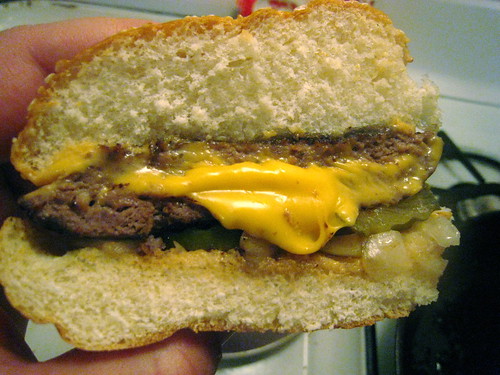
No comments:
Post a Comment